House music is not just a genre; it’s a cultural phenomenon that has shaped the landscape of electronic dance music.
With its infectious rhythms and ability to connect people on the dance floor, it can transport listeners to a world of rhythmic bliss.
That’s why, as a music producer, knowing the proper BPM of house music and various electronic dance music subgenres can unlock the full potential of your tracks.
It will also help you create music that resonates with audiences worldwide.
In today’s article, we’ll be breaking down:
- The essence of House music ✓
- BPM evolution in House tracks ✓
- Mood and style through BPM ✓
- BPM in House Music subgenres ✓
- Perfecting House music production ✓
- Constructing captivating beats ✓
- Tempo range in House tracks ✓
- Mixing techniques and BPM ✓
- Advanced House production skills ✓
- Selecting the ideal BPM for House tracks ✓
- Much more ✓
You’ll be equipped with the knowledge to produce house music tracks that captivate and energize audiences.
Plus, you’ll be able to understand and manipulate BPM like a professional.
Whether you’re fine-tuning your production skills or seeking to experiment with new sounds, this guide will help you master the art of house music production.
So, let’s dive in…
Table of Contents
- What is House Music? The Heart of Electronic Dance Music
- The Evolution of BPM in House Music Over the Years
- How BPM Dictates the Mood & Style in House Tracks
- Exploring The BPM of Different House Music Subgenres
- Deep House: A Journey into Soothing Rhythms
- Progressive House: The Energetic Evolution
- Bass House: The Power of Intense Beats
- Chicago House: The Origin and Its Unique Tempo
- Electro House: The Dynamic Fusion of Beats
- The Rhythmic Complexity of Drum and Bass
- Tech House: Merging Technology with Traditional Beats
- The Unique Tempo of Minimal House
- Acid House, Garage Music, and Funky House
- The Technical Side of House Music Production
- Bonus: BPM in Mixing & Producing House Music
- House Music BPM: Final Thoughts
What is House Music? The Heart of Electronic Dance Music
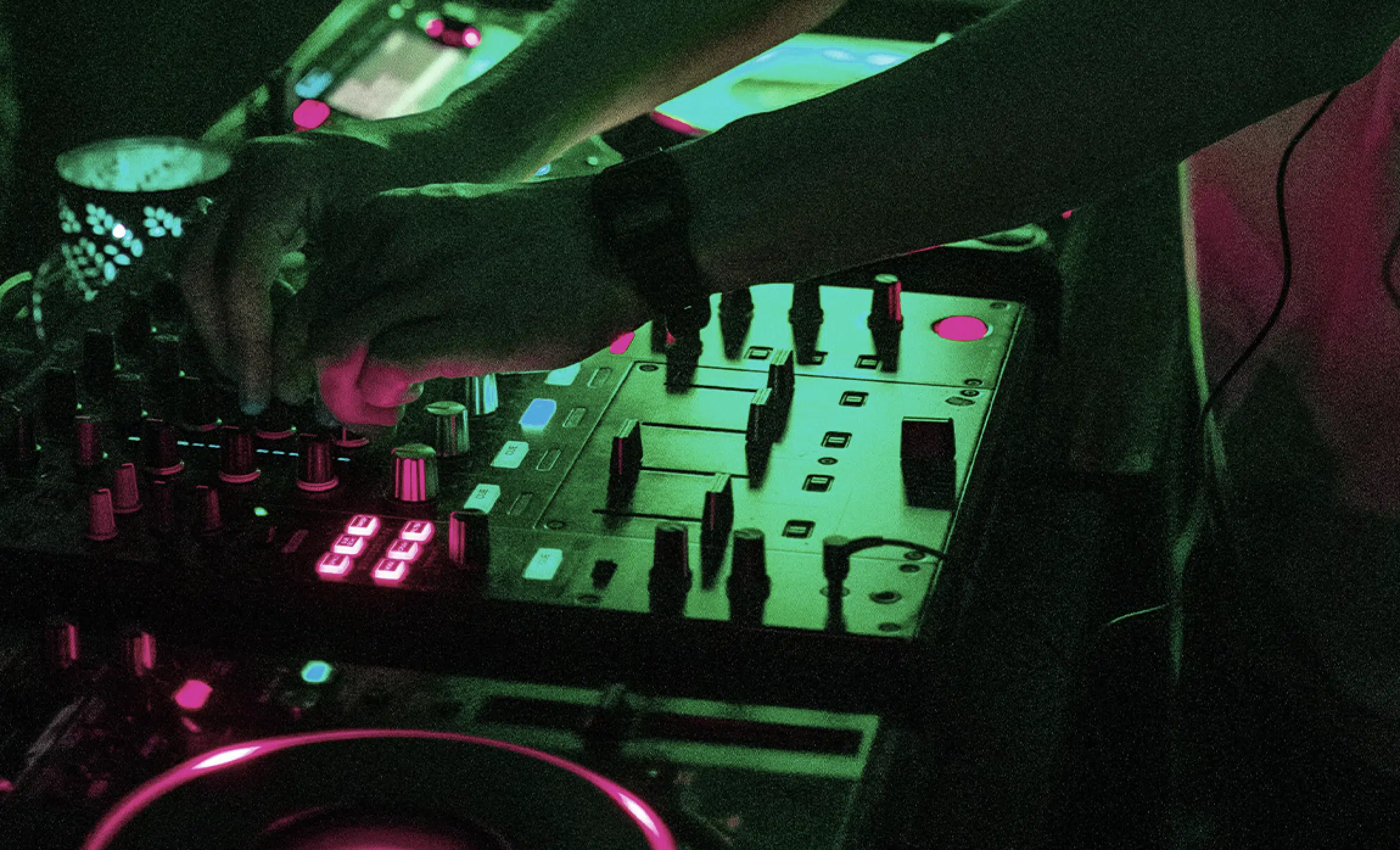
House music is a genre that revolutionized electronic music.
Originating in the early 1980s, it’s known for its repetitive 4/4 beat, often accompanied by soulful vocals and synthesized basslines.
This music genre has become a fundamental element in electronic music, influencing a wide array of music producers and music enthusiasts around the globe.
The core elements that define house music include:
- Rhythmic percussion
- A solid kick drum
- A tempo that breathes life into dance floors
It evolved from disco music, adopting electronic sounds that have defined modern electronic music.
House music’s adaptability has contributed to its global appeal.
From dance clubs to stages worldwide, it has spawned numerous subgenres 一 each retaining the essence of the original house sound.
House music continues to be a prominent force in today’s digital age.
With music producers exploring different tempos and electronic elements to craft tracks that resonate with diverse audiences.
The Evolution of BPM in House Music Over the Years
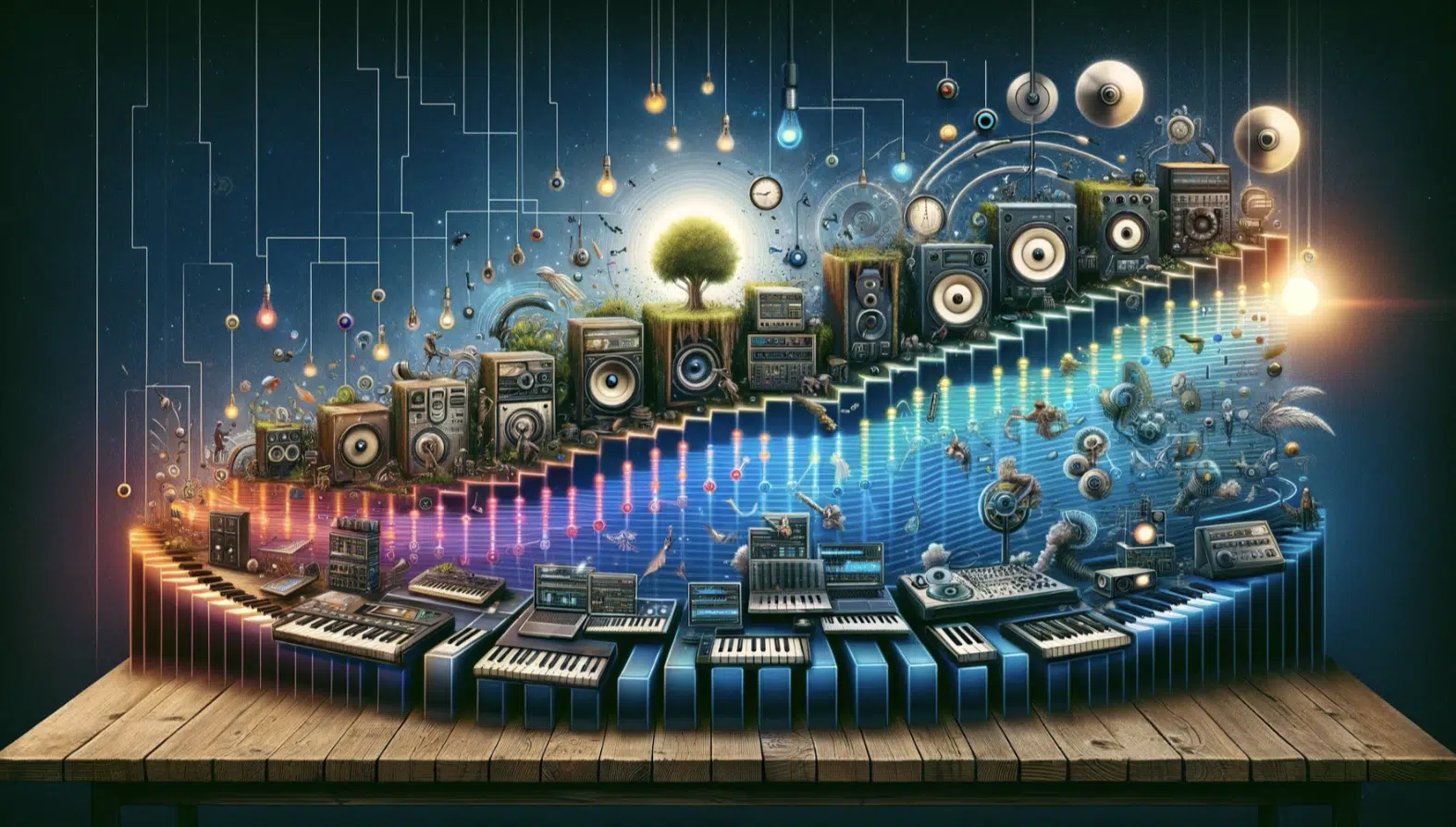
Initially influenced by the tempo of disco music, early house tracks often featured BPMs around 120.
As the music genre developed, its tempo range expanded, adapting to the changing tastes of audiences and the advancements in music production technology.
The 1990s and 2000s witnessed a notable diversification in the BPM (beats-per-minute) range within house music.
Subgenres like Deep House often opted for slower BPMs to create a more mellow vibe.
Conversely, other genres like Electro House, ventured into higher BPMs, catering to energetic dance floors.
Today, house music encompasses various BPMs 一 from the laid-back rhythms of deep house to the vigorous beats of bass house.
This broad range allows house music to cater to different settings and preferences, from relaxed lounges to vibrant nightclubs.
How BPM Dictates the Mood & Style in House Tracks
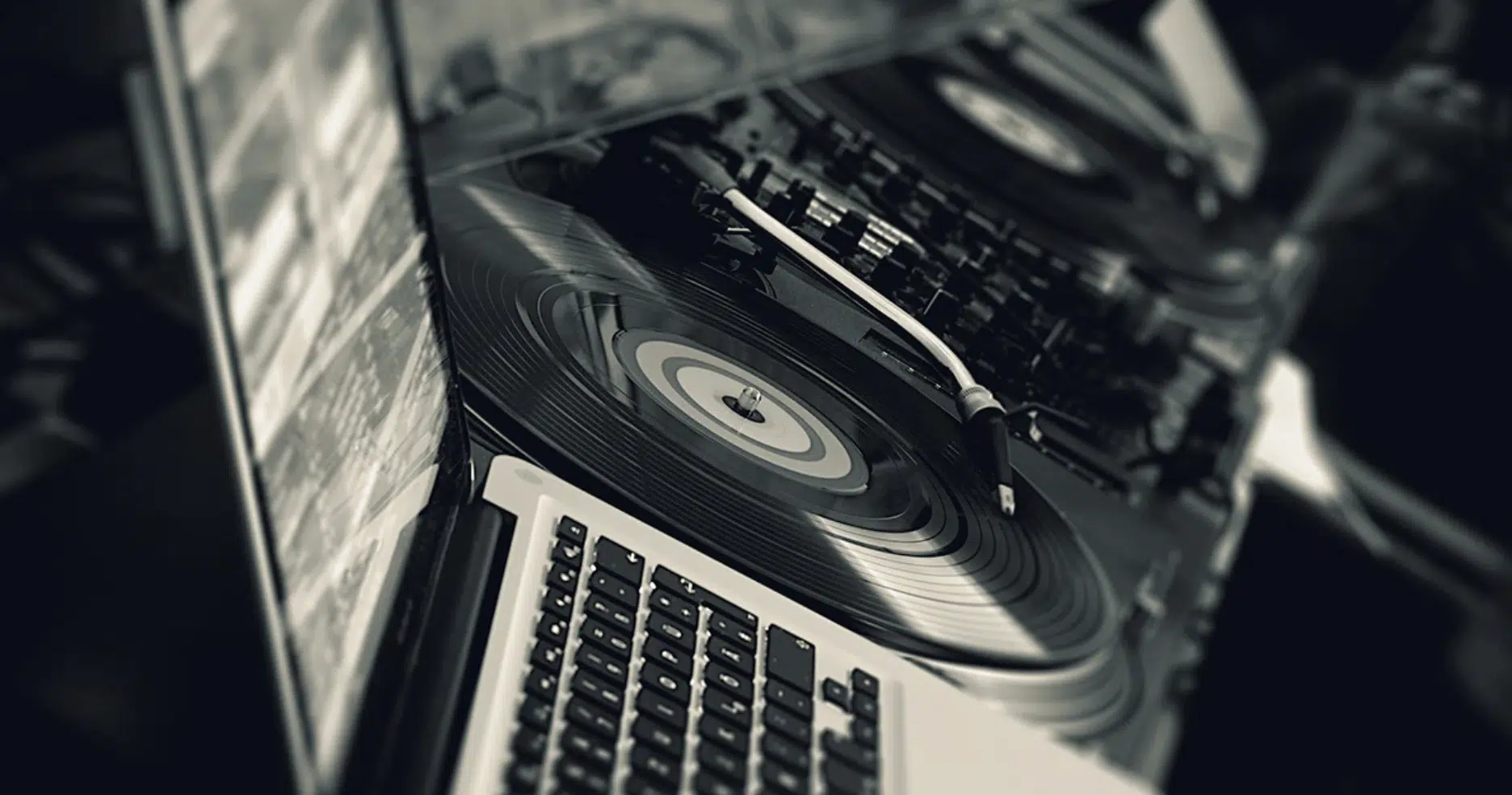
BPM (beats-per-minute) is more than a mere number in house music.
It’s a key factor that shapes the mood and style of a track.
Higher BPMs typically infuse energy and excitement, ideal for peak-time dance floors, whereas lower BPMs can create a relaxed, groove-oriented atmosphere.
For music producers, choosing the appropriate BPM for your song is critical.
It’s a decision that goes beyond adhering to music genre standards; it’s about crafting the desired emotional impact.
This choice can significantly influence how a track is perceived and experienced by listeners.
- Faster BPMs 一 Generally infuse house tracks with heightened energy and excitement.
- Slower BPMs 一 Generally create a more relaxed atmosphere in house music.
This allows the tracks to resonate with those who prefer slower tempos.
As opposed to maintaining the same tempo throughout a set, which can provide a consistent and hypnotic dance experience.
Each house music subgenre has its typical tempo range.
Deep house, for instance, often resides in the 120-125 BPM range, offering a smoother, soulful sound.
In contrast, Electro House tracks might lean towards 128-130 BPM for a more dynamic and electrifying feel.
As a music producer, you should try manipulating the BPM (beats-per-minute) to create tension and release in your tracks.
This technique is essential in building climactic moments or transitioning smoothly between different song sections.
Exploring The BPM of Different House Music Subgenres
As we further explore house music, let’s examine how different house/electronic dance music subgenres utilize BPM (beats-per-minute) to create unique soundscapes.
-
Deep House: A Journey into Soothing Rhythms
Deep House, a prominent house music subgenre, stands out with its characteristic BPM range.
Typically residing between 120-125 BPM, the deep house genre offers a more relaxed, soothing tempo than other house music tracks.
This BPM range is ideal for creating a smooth, soulful sound synonymous with deep house.
The slower BPMs in Deep House facilitate a laid-back and engaging groove.
This tempo allows for intricate musical elements like jazz-influenced chords and deep, resonant basslines to shine through.
The result is a rhythmic yet relaxed vibe.
This makes Deep House a perfect fit for intimate settings and more mellow moments on the dance floor.
The Deep House genre maintains its unique position in electronic music through its BPM.
The tempo range encourages creative exploration of rhythm and melody 一 enabling producers to craft tracks that resonate emotionally with their audience.
This subtle balance of energy and calm in Deep House is a testament to the importance of BPM in defining a subgenre’s character.
-
Progressive House: The Energetic Evolution
Progressive House, another key player in the house genre, is known for its slightly faster tempo, typically ranging from 126 to 130 BPM.
This BPM range allows Progressive House tracks to gradually build energy, creating an uplifting and dynamic atmosphere that’s a genre hallmark.
The structure of Progressive House music is heavily influenced by its BPM, helping the audience connect with the rhythm.
The faster tempo facilitates longer build-ups 一 leading to climactic drops that are both exhilarating and harmonious.
This dynamic makes the progressive house genre a favorite among electronic dance music fans, as it masterfully combines rhythm with melodic progression.
The BPM range in progressive house is crucial for achieving its characteristic sound.
It allows for complex layering of sounds and a seamless flow between different musical elements.
This creates an immersive experience for the listener, where the tempo ranges act as a guide through the evolving musical landscape of a Progressive House track.
-
Bass House: The Power of Intense Beats
Bass House, a subgenre that has gained significant traction in the house music scene, is defined by its higher BPM (often exceeding 130 BPM).
This BPM range is critical to the subgenre’s energetic and impactful sound profile, making Bass House tracks a staple in high-energy club environments and music festivals.
The elevated BPM (beats-per-minute) of Bass House brings a level of intensity and drive that sets it apart from other house subgenres.
It allows for a more aggressive rhythm section, characterized by:
This makes bass house an exhilarating experience, perfect for dance floors that crave high-octane music.
Producers of bass house use the higher BPM to their advantage 一 crafting fast-paced and rhythmically complex tracks.
This complexity adds depth to the tracks, ensuring they are energetic and musically rich.
The BPM plays a pivotal role in this, as it sets the foundation for the high-energy, dynamic sound that the Bass House genre is known for.
-
Chicago House: The Origin and Its Unique Tempo
Chicago House, the music genre that laid the foundation for many house music tracks today, is characterized by its distinctive BPM range.
Originating from the nightclubs of Chicago, this subgenre typically features a BPM range that mirrors the early days of house music.
This often ranges from around 120 to 125 BPM.
The tempo of the Chicago House genre is a nod to its roots, reflecting the influence of disco and soul music.
This BPM range allows for a rhythmic flow that is both nostalgic and modern 一 blending classic house elements with contemporary electronic sounds.
The result is a unique sound that pays homage to the history of house music while still resonating with today’s audiences.
Chicago House’s BPM is crucial in creating its signature groove.
The tempo supports a blend of repetitive beats and melodic basslines, often accompanied by soulful vocals.
This creates an infectious yet understated danceable rhythm, making Chicago House a beloved subgenre within the house music community.
-
Electro House: The Dynamic Fusion of Beats
Electro house, a subgenre that has made its mark in the house genre, is known for its more aggressive BPM range, typically between 128 and 130 BPM.
This BPM allows Electro House tracks to deliver a powerful and energetic sound, perfect for dance floors and festival crowds.
The higher BPM in electro house is key to its intense and dynamic nature.
It enables you to incorporate hard-hitting drum patterns and synthesized melodies 一 creating a bold and compelling sound.
The tempo also allows for creative, new sound design, where music producers and sound designers can experiment with various electronic elements to produce a distinct sound.
Electro house’s BPM range plays a significant role in shaping the overall energy of the tracks.
The fast-paced beats create an electrifying atmosphere that captivates the audience, driving them to the dance floor.
The tempo sets the pace and influences the arrangement of musical elements, making each Electro House track a high-energy journey.
-
The Rhythmic Complexity of Drum and Bass
Drum and Bass, a music genre closely related to house music, stands out with its unique BPM, often ranging from 160 to 180 BPM.
This significantly faster tempo sets Drum and Bass apart from traditional house music tracks, offering a more intense and rapid rhythm.
The high BPM of Drum and Bass creates a sense of urgency and energy unparalleled in other house music subgenres.
Therefore, it allows for complex drum patterns and fast-paced basslines 一 key elements of the Drum and Bass sound.
The result is a pulsating rhythm that energizes and invigorates the listener.
Incorporating Drum and Bass elements into house music tracks can add a new dimension of rhythm and energy.
The fusion of these two music genres showcases the versatility of house music and the impact of BPM in creating different musical experiences.
The fast Drum and Bass tempo introduces a new layer of complexity, challenging you to explore beyond traditional house music BPM ranges.
-
Tech House: Merging Technology with Traditional Beats
Tech House, a subgenre that blends techno and house music elements, typically features a BPM range of 125 to 130.
This tempo range allows tech house tracks to maintain the groove of traditional house while incorporating the more mechanical and repetitive elements of techno.
The BPM in tech house is essential for creating its signature sound, characterized by a steady beat and a focus on rhythm rather than melody.
This tempo supports a minimalistic approach to music production, where each important element is carefully crafted to contribute to the overall groove of the track.
Tech house producers use the BPM to their advantage 一 creating danceable and sophisticated tracks.
The tempo provides a framework for experimentation with different sounds and textures.
This allows you to create a new, modern, and timeless sound.
-
The Unique Tempo of Minimal House
As the name suggests, Minimal House is a subgenre of house music focusing on simplicity and minimalism.
The BPM range for Minimal House is typically around 120 to 125 一 providing a relaxed tempo that complements the genre’s understated approach.
This lower BPM in Minimal House allows for a focus on subtle musical elements.
It supports a less-is-more philosophy, where sparse arrangements and nuanced sound design take center stage.
This creates a hypnotic and immersive listening experience, letting the rhythm gently guide the listener.
The BPM of minimal house is crucial in setting the mood of the tracks.
The slower pace creates a laid-back atmosphere, making it ideal for more intimate settings or listeners seeking a more contemplative musical experience.
-
Acid House, Garage Music, and Funky House
Acid House, known for its squelchy basslines produced by the Roland TB-303, typically features a BPM range of 115 to 130.
This BPM range allows acid house tracks to maintain a lively yet not overwhelming tempo, suitable for creating its distinctive psychedelic and hypnotic sound.
Garage music, originating from the UK, often utilizes a 130 BPM.
This tempo supports the genre’s choppy beats and shuffled rhythms 一 creating an energetic and danceable sound.
The BPM in garage music shapes its rhythmic structure and overall vibe.
Funky House, as the name implies, incorporates elements of funk into house music.
It usually ranges from 120 to 130 BPM, providing a lively and soulful groove.
The tempo in Funky House is key to its ability to blend classic funk rhythms with modern house beats to create a nostalgic and fresh sound.
The Technical Side of House Music Production
Creating house music tracks and other house genres is both an art and a science, with BPM playing a crucial role in shaping the final product.
Let’s dive into the techniques and considerations for crafting compelling house music and other common genres.
-
Crafting the Perfect House Music Track
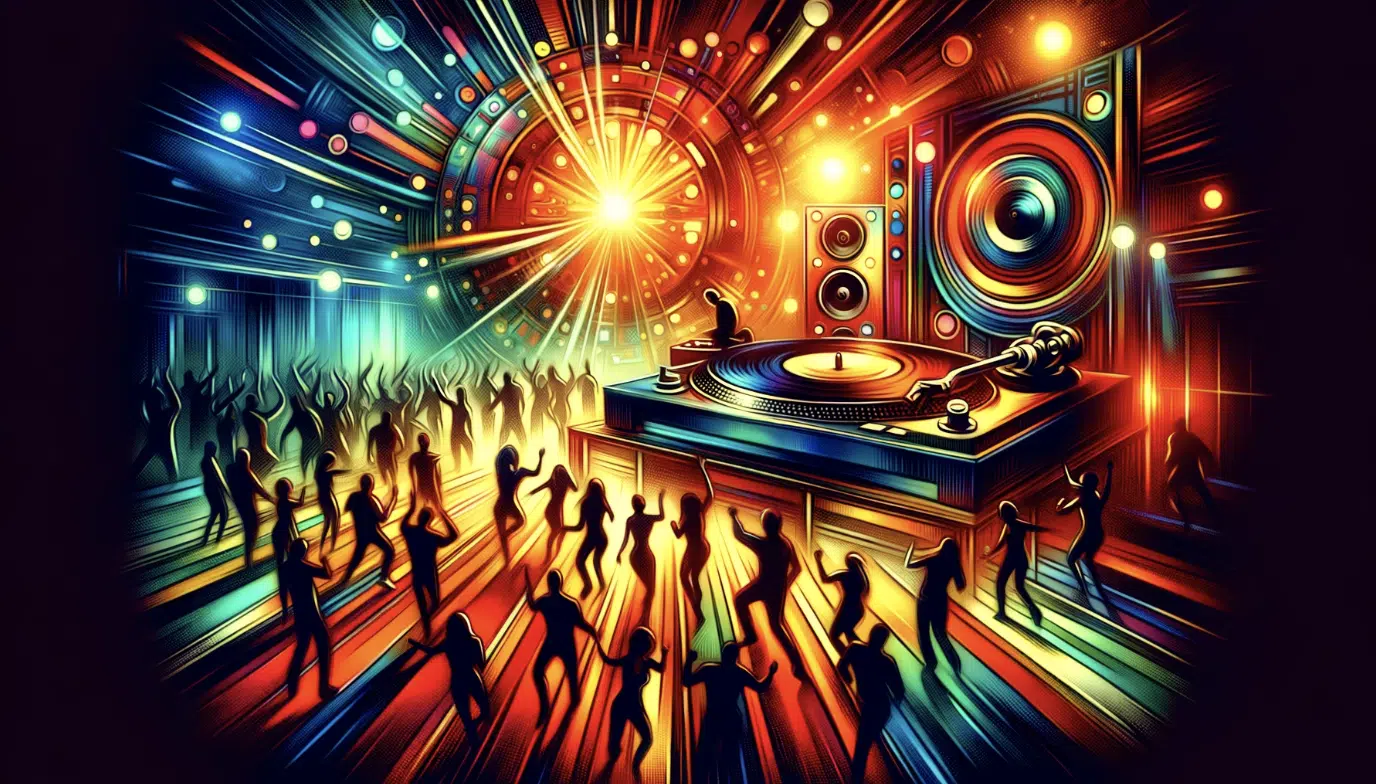
Creating the perfect house music track combines creativity, technical skill, and a deep understanding of the genre’s essentials.
The first step is conceptualizing the track produced, where you decide the mood, style, and key elements that will define your house track.
This is where the choice of BPM/certain tempos starts to take center stage, as it will influence everything from the rhythm patterns to the energy of the track.
The BPM becomes a guide for arranging various musical elements in the composition phase.
You must carefully consider how each element aligns with the chosen BPM, like:
- The kick drum
- The bassline
- Synths
This alignment is critical in creating a cohesive, rhythmic track that resonates with house music enthusiasts.
Finally, attention to detail in the mixing and mastering stages is essential in bringing out the best in a house music track; reference your favorite songs.
You must balance all the different elements to ensure they complement each other and collectively contribute to the track’s overall feel and tempo.
This meticulous process separates a good house track from a chart-topping house song.
-
Constructing a Captivating House Beat
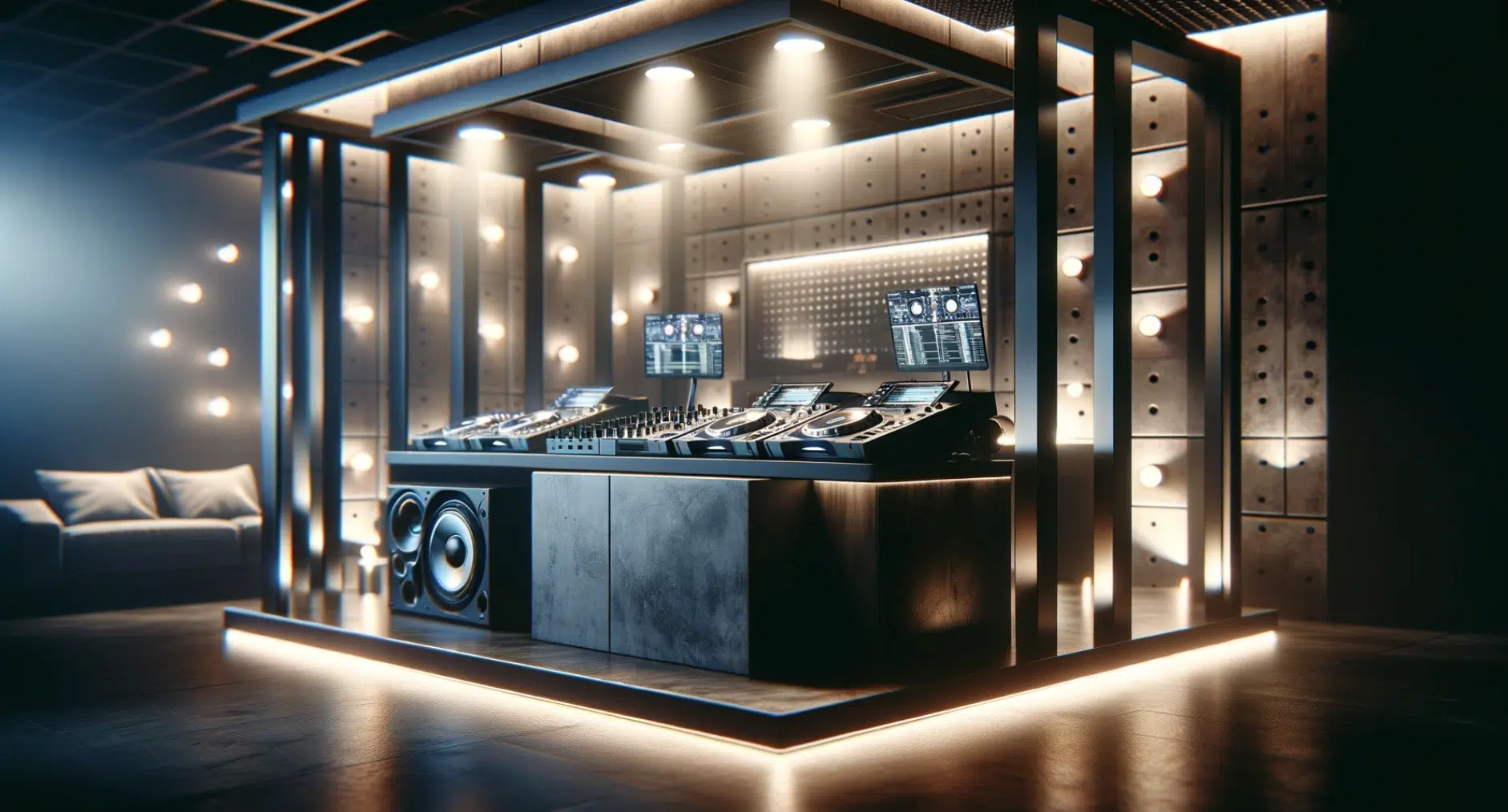
The heartbeat of any house music track is its beat, and constructing a captivating house beat is a fundamental skill for any house music producer.
The house beat must align with the chosen BPM/same tempo and enhance the track’s overall vibe and energy.
This often involves creating a groove that is both infectious and consistent.
Layering is a key technique in building a house beat.
Starting with a solid kick drum pattern that matches the BPM, producers gradually add other percussive elements like:
- Snares
- Hi-hats
- Claps
Each layer must complement the others, creating a complex yet harmonious rhythm.
Experimentation is also vital in beat-making…
It would help if you played with different drum sounds and rhythms to find the perfect combination that fits the track’s style and BPM.
The goal is to create a house beat that is unique and fitting for the house genre, capturing the subgenre’s essence while standing out.
-
Tempo Range: The Backbone of House Music Tracks
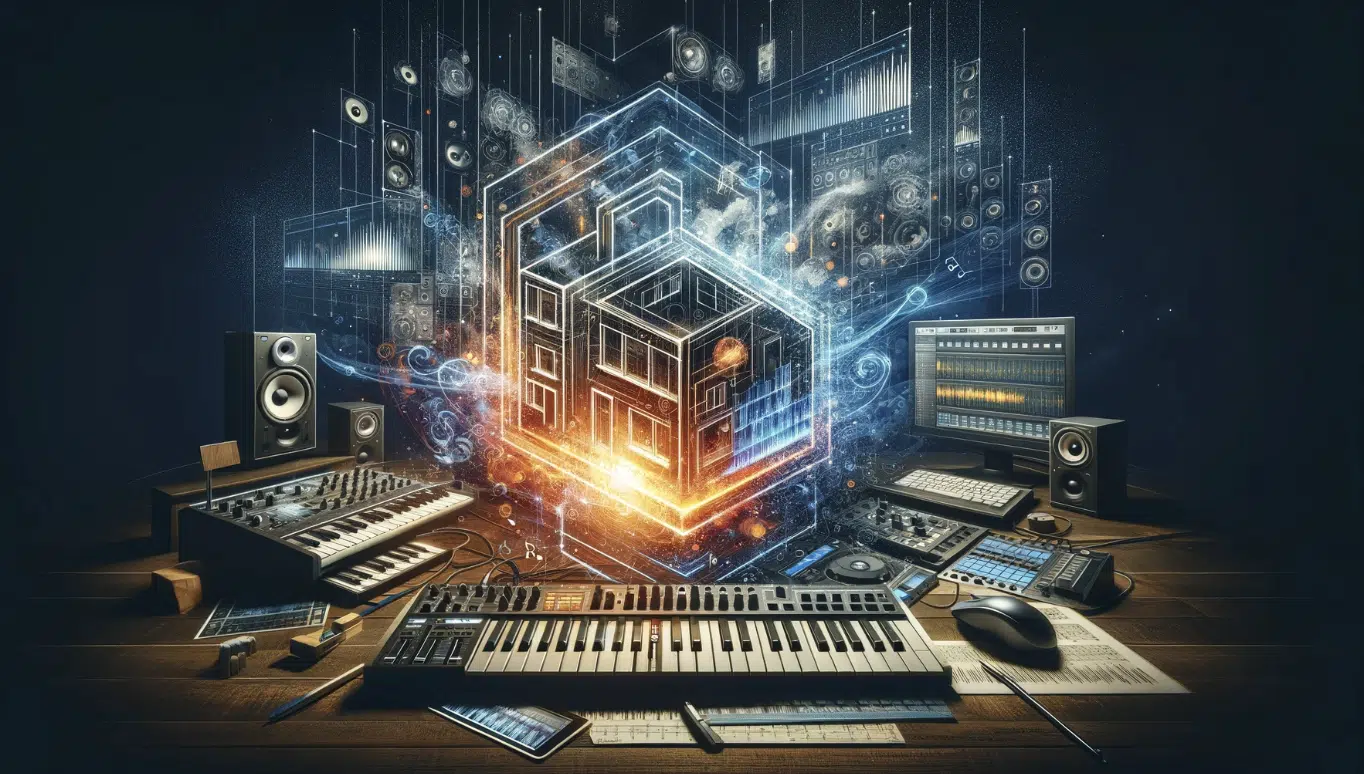
The tempo range is more than just a number in house music production; it’s the backbone that supports the entire structure of a track.
Choosing the right tempo range is crucial in determining the track’s mood and energy level.
- A slower tempo can create a relaxed, groove-oriented vibe.
- A faster tempo can inject energy and excitement.
Understanding the typical tempo ranges of different house subgenres is essential.
This knowledge allows them to craft tracks true to the music genre while exploring creative possibilities within those boundaries.
Whether it’s the laid-back rhythm of Deep House or the energetic pulse of Electro House, the tempo range is a defining element.
Flexibility in tempo can also be a powerful tool for producers.
Adjusting the BPM slightly up or down can significantly alter the feel of a track 一 allowing you to fine-tune the energy level and mood.
This flexibility offers endless creative possibilities, making tempo range central to house music production.
Bonus: BPM in Mixing & Producing House Music
The role of BPM (beats-per-minute) extends beyond production and into mixing and live performance.
Understanding and manipulating BPM is crucial for DJs and producers in creating seamless and engaging musical experiences.
-
The Art of BPM in Mixing House Tracks
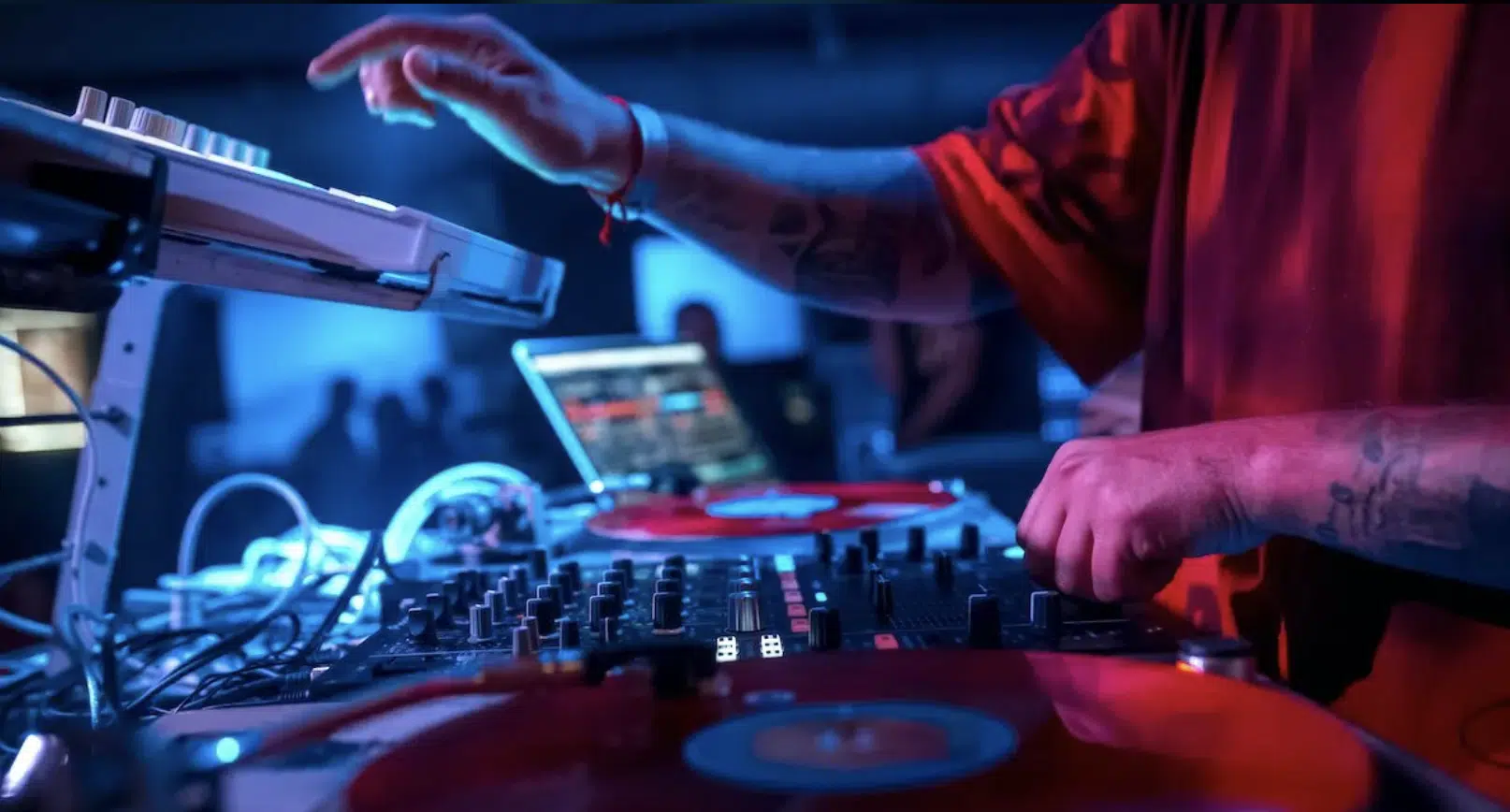
Mixing house music tracks is an art form that requires a deep understanding of BPM (tempo).
DJs must blend tracks with varying BPMs to create a smooth and engaging set.
This involves not just matching different tempos but also understanding how different BPMs interact and affect the flow of a set.
One of the key challenges in mixing is transitioning between tracks with different BPMs.
This requires skill in tempo adjustment and timing to ensure the transition is smooth and maintains the energy of the set.
House DJs often use tools like pitch faders and sync functions to match the two tracks’ BPMs/different tempo ranges.
However, the art lies in doing so in a natural way that keeps the audience engaged.
Creative use of BPM (beats-per-minute) in mixing can also add a dynamic, important element to a DJ set.
Changing the tempo of a track, either gradually or abruptly, can create moments of surprise and excitement on the dance floor.
When used skillfully, this technique can elevate a DJ set from good to unforgettable.
-
Techniques for DJs to Beat Match in House Music
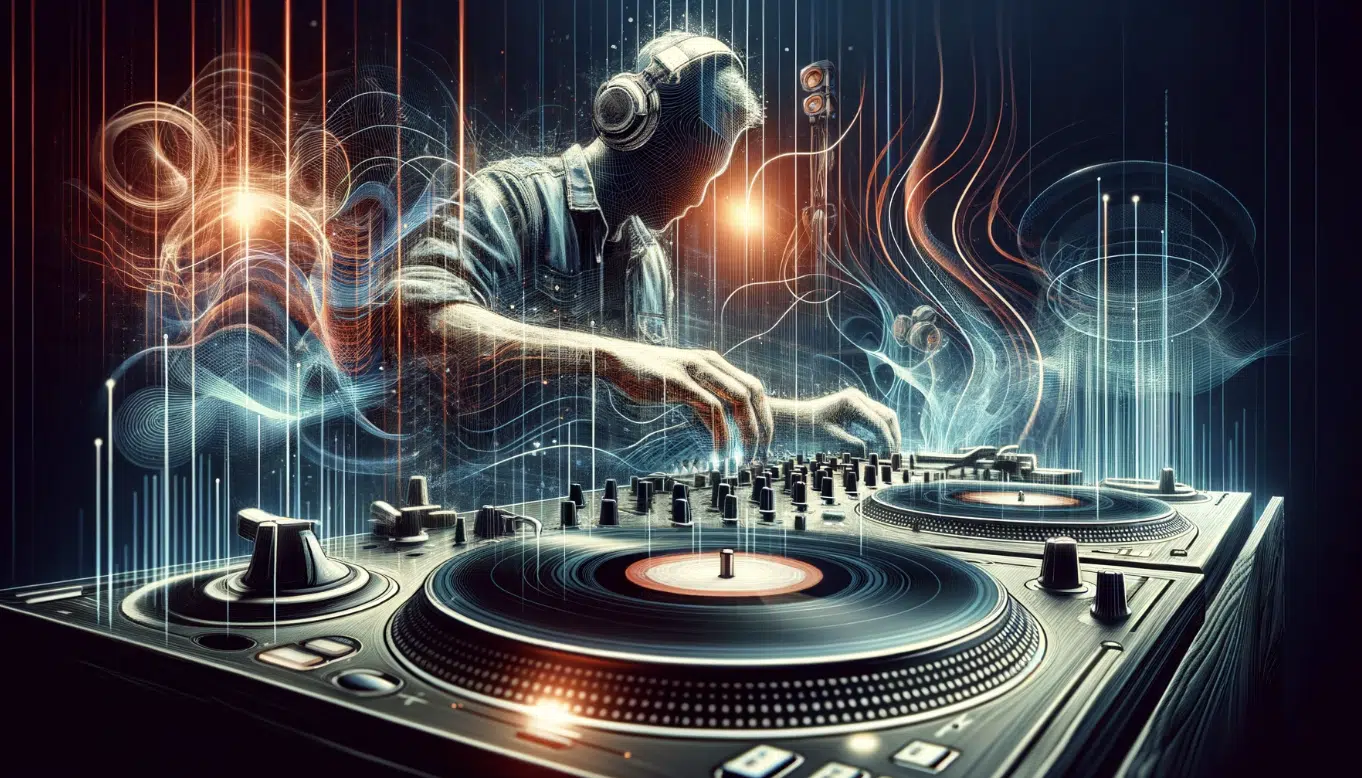
Beat matching is a fundamental skill for any DJ, especially in house music, where rhythm is king.
DJs beat match for a few reasons, but ultimately to sound fluid and professional.
The first step in beat matching is accurately determining the BPM.
NOTE: This can be done by ear or with the help of digital tools that display the BPM.
Once the BPMs are known, the DJ needs to synchronize the beats of the two tracks.
This involves adjusting the tempo of the incoming track to match the playing track, using pitch control.
The key is to align the beats precisely to sync, creating a seamless transition. Not every track will be perfect, so this technique is crucial.
Beat matching also requires a good ear for hypnotizing rhythm and timing.
DJs must listen closely to both tracks, often using headphones, to ensure the beats are aligned.
This process can be challenging in a live setting with external noise, but it’s essential for a smooth mix.
-
Adjusting Tempo for Creative House Music Tracks
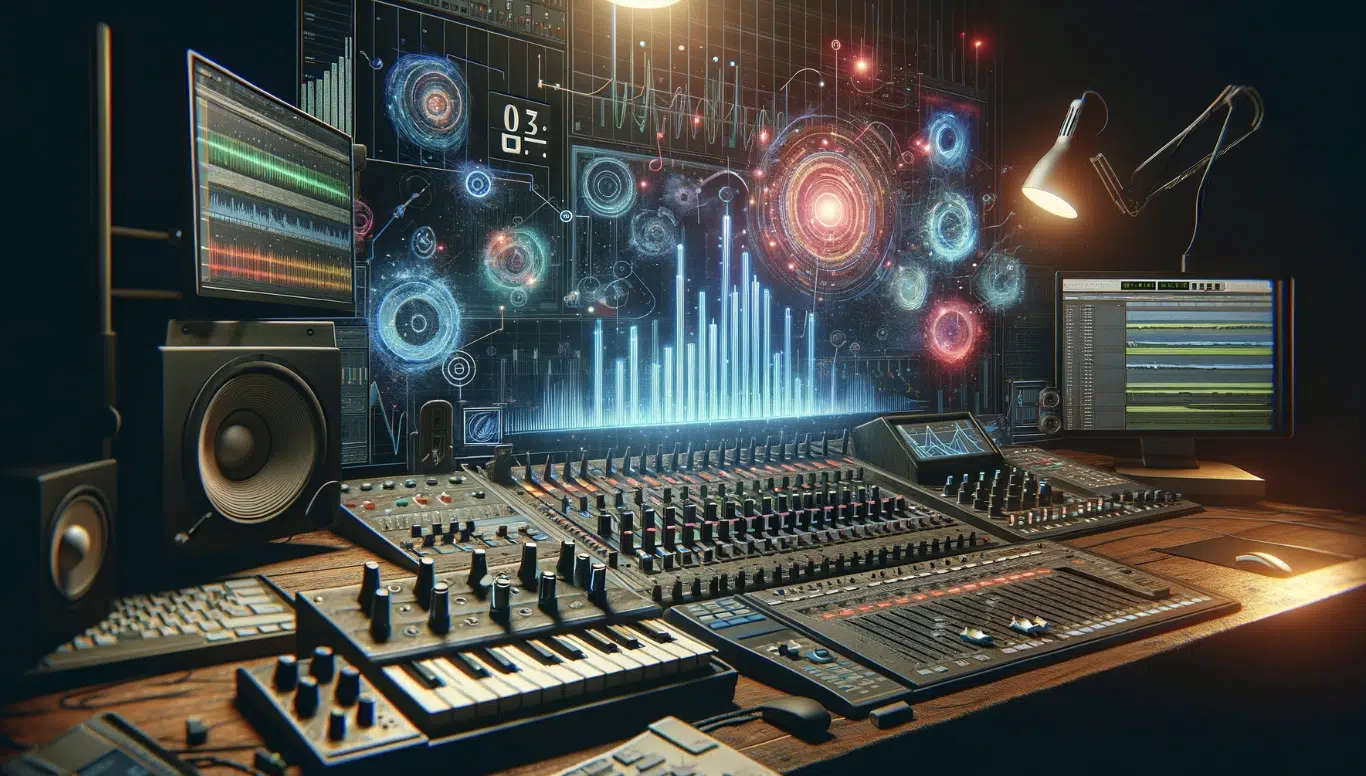
Tempo adjustment is a tool for mixing and a creative technique in most house music production.
You can alter the tempo of a track to create different versions, such as a radio edit with a faster tempo or a lounge version with a slower tempo.
This flexibility allows the same track to fit various contexts and audiences.
Adjusting tempo can also create tension and release within a track.
Think about it… when you play house music, unlike, say, hip-hop or rock, there’s a unique excitement when you know there will be peaks and valleys.
For example, gradually increasing the BPM (beats-per-minute) for a build-up leading to a drop can heighten anticipation.
This makes the drop much more impactful.
Conversely, slowing down the tempo can create a pause, allowing listeners to relax before ramping up the energy again.
This technique requires a nuanced understanding of how tempo changes affect the feel of a house track (and other genres, of course).
You never want to focus on exactly the same tempo for every track 一 you have to keep it exciting, new, and fresh.
Music producers and artists like yourself must ensure that any tempo adjustments feel natural and enhance the overall experience of the track rather than disrupting its flow.
House Music BPM: Final Thoughts
House Music BPM stands as a cornerstone in the realm of electronic dance music, a rhythmic compass guiding producers and DJs through the creation and performance of captivating tracks.
The art of manipulating House Music BPM is not just about adhering to genre norms.
It’s a creative journey, exploring how different tempos can elicit various emotions and responses from the audience.
Understanding and mastering House Music BPM nuances can transform how you approach your craft.
It’s about finding that sweet spot where rhythm meets melody, where beats align perfectly with the vibe you’re aiming to create.
Whether it’s the deep, soulful rhythms of deep house or the energetic pulses of electro house, BPM is the heartbeat of your tracks.
To further enhance your production toolkit, don’t miss out on this legendary free FX pack.
This collection of 20 professional-quality FX, including uplifters, impacts, downlifters, and misc sounds, is an invaluable resource.
Expertly crafted by seasoned producers and sound designers, these FX are the perfect way to add ear candy and intrigue to your music.
They’re designed to help you grab and hold attention, seamlessly integrating with the BPM of your house tracks to create a more dynamic and engaging listening experience.
Remember, house music BPM is more than a technical detail 一 it’s the lifeline that connects your music to the listeners.
By carefully choosing and manipulating BPM, you’re not just making music but crafting experiences, memories, and emotions.
Embrace the power of house music BPM, and let it guide you to new heights in your musical journey.
Until next time…







Leave a Reply
You must belogged in to post a comment.